42 nutrients on food labels
How to obtain a nutrition food label? What information must be included on a nutritious food label? The list of nutrients that must or may be declared is currently being updated. On the label, vitamin D and potassium are required. Calcium and iron will be required in the future. Vitamins A and C are no longer required, but they can be added on a whim. Food Labels Guide & Examples | How to Read Nutrition Labels - Video ... A nutrition facts label, or food label, is designed to provide information about the nutrient content of the food item. At the top we find the 'Serving Size' and 'Servings Per Container,' followed ...
What is a nutrition label? The Food and Drug Administration (FDA) requires the Nutrition Facts label on most packaged goods and beverages. The Nutrition Facts label contains detailed information about the nutrient content of an item, such as the amount of fat, sugar, sodium, and fiber it contains. How do you make a nutrition label

Nutrients on food labels
How to Read a Nutrition Label: Tips from a Registered Dietitian Year the FDA updated the nutrition label to show new nutrition science 2,000 Calories per day for an average diet (basis for food labels) 25 Maximum grams of added sugar per day recommended for women 36 Maximum grams of added sugar per day recommended for men Tip 3: A higher percent of daily value is not always better. Understanding Nutrition Labels - Medical News The nutrition label displays information about the number of calories, and lists the nutrients in the packaged food and its respective %DV. It helps health-conscious consumers make quick decisions ... How To Read A Food Nutrition Label | Gobble Also in this section of the label are important nutrients you need for healthy functioning. These include dietary fiber, vitamin D, calcium, iron, and potassium. Look for foods high in these values! Percent Daily Value The percent daily value (% DV) is the amount of each nutrient present in one serving size of the food or drink.
Nutrients on food labels. The New Nutrition Facts Label | FDA - U.S. Food and Drug Administration The U.S. Food and Drug Administration (FDA) has updated the Nutrition Facts label on packaged foods and drinks. FDA is requiring changes to the Nutrition Facts label based on updated scientific... How to Read a Nutrition Label - Earth Animal The food is formulated with ingredients that contain all the necessary nutrients required by AAFCO Dog or Cat Food Nutrient Profiles. These foods bear the statement "(Name of product) is formulated to meet the nutritional levels established by the AAFCO (Dog/Cat) Food Nutrient Profiles." The food is tested using AAFCO Feeding Trial Protocol(s). How To Read Food and Beverage Labels - National Institute on Aging The U.S. Food and Drug Administration (FDA) requires a Nutrition Facts label on most packaged foods and beverages. At the top of the Nutrition Facts label, you will find the total number of servings in the container and the food or beverage's serving size. Reading Food Nutrition Labels 101 and How to Decode Them These labels indicate that the food has a certain amount of a specific ingredient. Therefore when your objective is to increase the amount, or choose the brand with the most of a specific nutrient, these are the magic words: source (i.e. source of calcium) high (i.e. high in fiber) excellent source (i.e. excellent source of vitamin A)
The Basics of the Nutrition Facts Label - Academy of Nutrition and ... You know about calories, but it also is important to know about the additional nutrients on the Nutrition Facts label. Protein: A percentage Daily Value for protein is not required on the label. Eat moderate portions of lean meat, poultry, fish, eggs, low-fat milk, yogurt and cheese, plus beans and peas, nuts, seeds and soy products. How do you read a food nutrition label? The Nutrition Facts label's Percent Daily Value (DV) is a guide to the nutrients in one serving of food. For example, if the label says 15% calcium, it implies that one serving delivers 15% of your daily calcium requirement. The Daily Values (DVs) are calculated using a 2,000-calorie diet for healthy people. How to read nutrition facts on food labels? The Nutrition Facts label's Percent Daily Value (DV) is a guide to the nutrients in one serving of food. For example, if the label says 15% calcium, it implies that one serving delivers 15% of your daily calcium requirement. The Daily Values (DVs) are calculated using a 2,000-calorie diet for healthy people. What Food Labels Tell You | Smokefree If you want to take in less of a nutrient such as fat or sodium, choose foods with a lower % DV—5 percent or less. If you want to take in more of a nutrient such as fiber, pick foods with a higher % DV—20 percent or more. The information on a Nutrition Facts label is based on 2,000 calories a day. You may need to eat less or more than 2,000 ...
How to Read a Nutrition Facts Label | Everyday Health In the bottom portion of the nutrient label are the main vitamins and minerals that are required to be included: vitamin D, calcium, iron, and potassium. "The updated nutrition facts label includes... Nutrition Facts Label - IFT.org - Institute of Food Technologists The 1990 Nutrition Labeling and Education Act requires disclosure of nutrient composition information on almost all packaged food and beverage products sold to household consumers. The Nutrition Facts Label, also referred to as the Nutrition Facts Panel, on packaged food and beverage products is intended to help consumers make informed food ... How to read the nutritional labels on food? It varies on the food matrix and the nutrient, but NIST measurements of nutrient components (such as sodium, calcium, and potassium), macronutrients (fats, proteins, and carbs), amino acids, and fatty acids are generally accurate to within 2% to 5% . What does the term "pro" signify in the context of nutrition? Pro: Beneficial for health issues. Nutrition Facts labels for food processors - Product Center The label itself, called Nutrition Facts as stipulated by the U.S. Food and Drug Administration (FDA), is a specific label format that uses a standard serving measurement and lists the number of calories and specific nutrients in a food. Companies who use a Nutrition Facts label are required by the FDA to use the 2016 version of the label.
Help patients understand Nutrition Facts labels to eat smarter In this video, Dr. Edwards will review the regulation of the Nutrition Facts label and three key sections of the label: servings, calories, and percent Daily Value. When choosing and comparing packaged foods and beverages, the Nutrition Facts label can help patients make informed decisions that can have positive effects on their long-term health.
Do Individuals Use Nutrition Labels on Food Packages to Make Healthy ... Nutrition labels on food packages are designed to assist consumers in making healthy decisions. Based on the model of a dual-process system, the current study examined how people might be affected by nutrition labels and consuming contexts when making choices about healthy foods. Using four types of nutrition labels (i.e., the NuVal label, 5-Color nutrition label, traffic light label, and ...
How to Read Food Labels: Your Complete Consumer Guide Details included on food labels are the nutritional composition of a food, as well as ingredients and their relative amounts. When relevant, they may also indicate important details about the food's quality, origin, processing, and method of preservation. With this information, the theory goes, you can make intentional decisions about what to buy.
FDA (US) Nutrition Label Rounding Rules - ReciPal These rules apply to all nutrients that have to show a percentage of the daily value that a serving of the product supplies. So they include all vitamins and minerals and everything in the main panel except trans fat, total sugars, and protein (% DV isn't required for protein, but it is allowed, and if you show it, it's rounded too):
Daily Value on the New Nutrition and Supplement Facts Labels The Nutrition Facts label must list total fat, saturated fat, trans fat, cholesterol, sodium, total carbohydrate, dietary fiber, total sugars, added sugars, protein, and certain vitamins and...
Food Labeling & Nutrition | FDA Food labeling is required for most prepared foods, such as breads, cereals, canned and frozen foods, snacks, desserts, drinks, etc. Nutrition labeling for raw produce (fruits and vegetables) and...
Nutrition rating stars set to appear soon on food pack labels Solid food with a score of more than 25 will be given 0.5 stars, and those with a score less than - (minus)11 will get 5 stars. "The INR system rates the overall nutritional profile for packaged food by assigning it a rating from ½ star (least healthy) to 5 stars (healthiest). More stars indicate the food product is better positioned to ...
How to Understand and Use the Nutrition Facts Label | FDA - U.S. Food ... Dietary fiber, vitamin D, calcium, iron ad potassium are nutrients on the label that Americans generally do not get the recommended amount of. They are identified as nutrients to get more of....
Nutrition labelling | Food Standards Agency Where nutrition information is declared on the label, certain nutrients can be repeated in the principal field of vision usually on the front of the food packaging. This information is voluntary. If a food business chooses to provide this additional declaration, only the following information may be provided: energy only
Changes to the Nutrition Facts Label | FDA - U.S. Food and Drug ... The Nutrition Facts label on packaged foods was updated in 2016 to reflect updated scientific information, including information about the link between diet and chronic diseases, such as obesity...
How To Read A Food Nutrition Label | Gobble Also in this section of the label are important nutrients you need for healthy functioning. These include dietary fiber, vitamin D, calcium, iron, and potassium. Look for foods high in these values! Percent Daily Value The percent daily value (% DV) is the amount of each nutrient present in one serving size of the food or drink.
Understanding Nutrition Labels - Medical News The nutrition label displays information about the number of calories, and lists the nutrients in the packaged food and its respective %DV. It helps health-conscious consumers make quick decisions ...
How to Read a Nutrition Label: Tips from a Registered Dietitian Year the FDA updated the nutrition label to show new nutrition science 2,000 Calories per day for an average diet (basis for food labels) 25 Maximum grams of added sugar per day recommended for women 36 Maximum grams of added sugar per day recommended for men Tip 3: A higher percent of daily value is not always better.



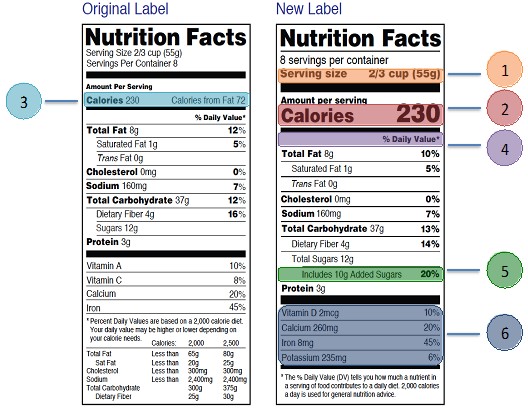

:max_bytes(150000):strip_icc()/Untitled-design-1--575368573df78c9b4691365f.jpg)




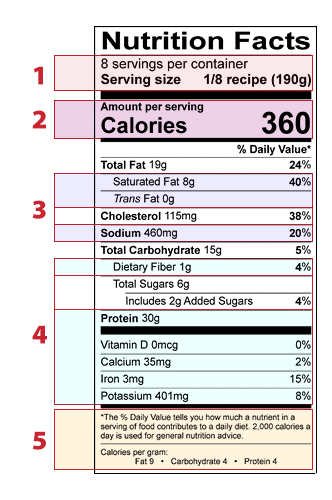






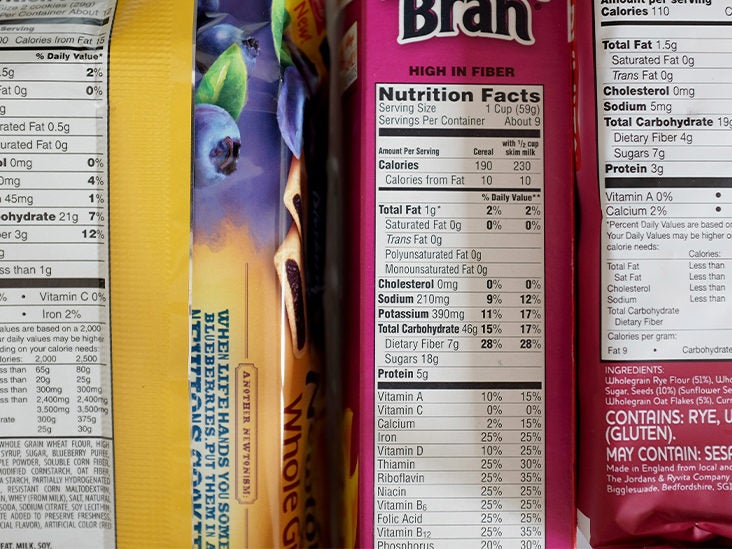
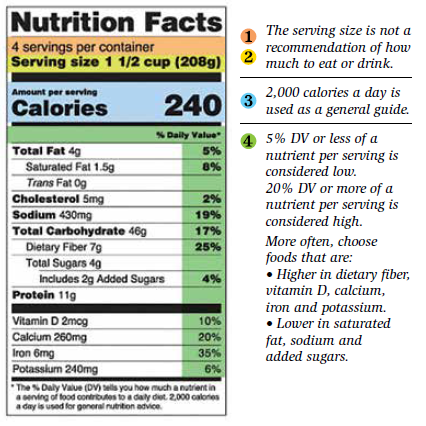
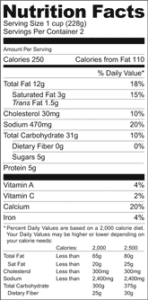
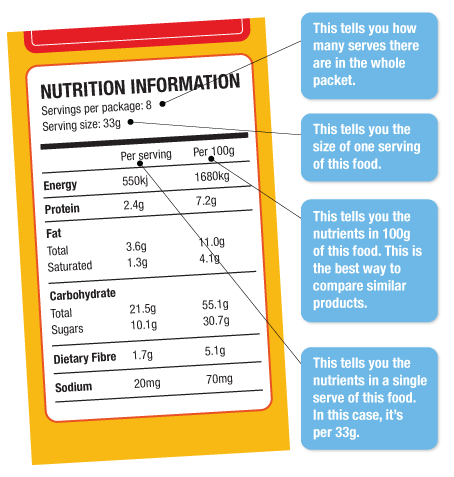

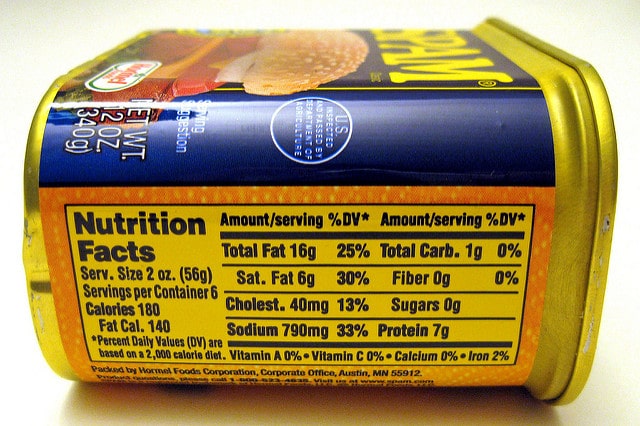

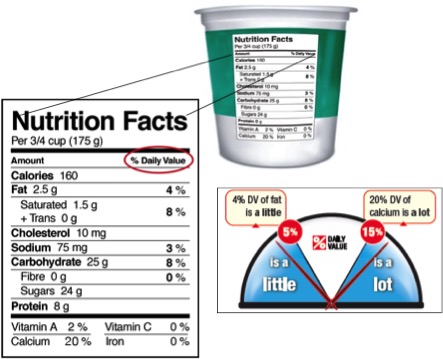
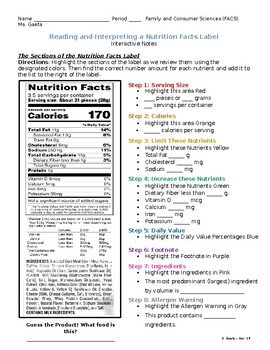
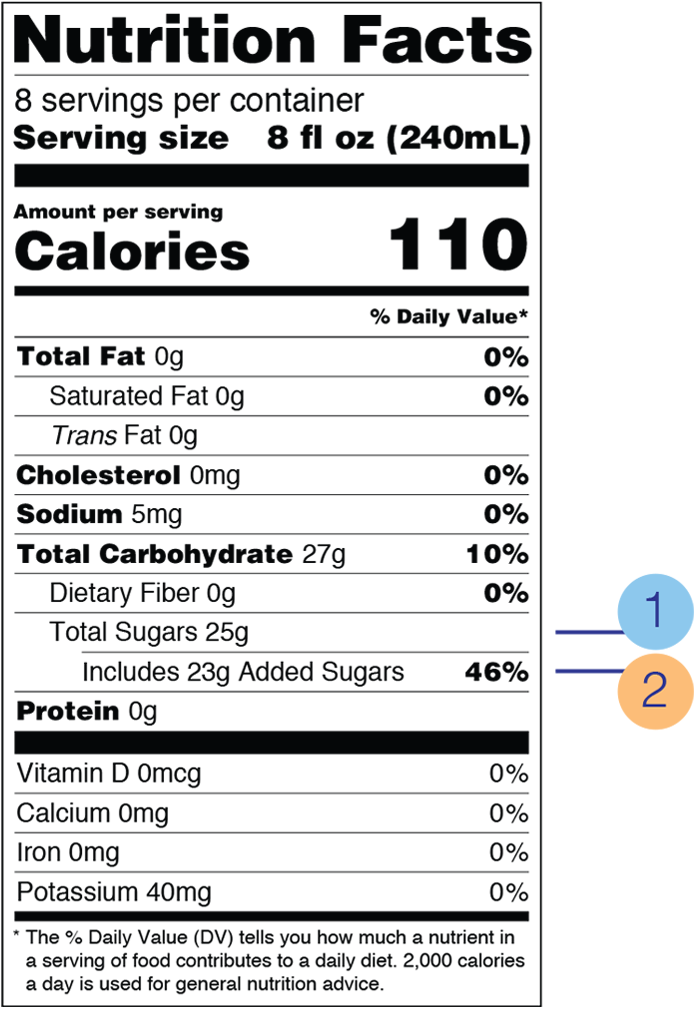



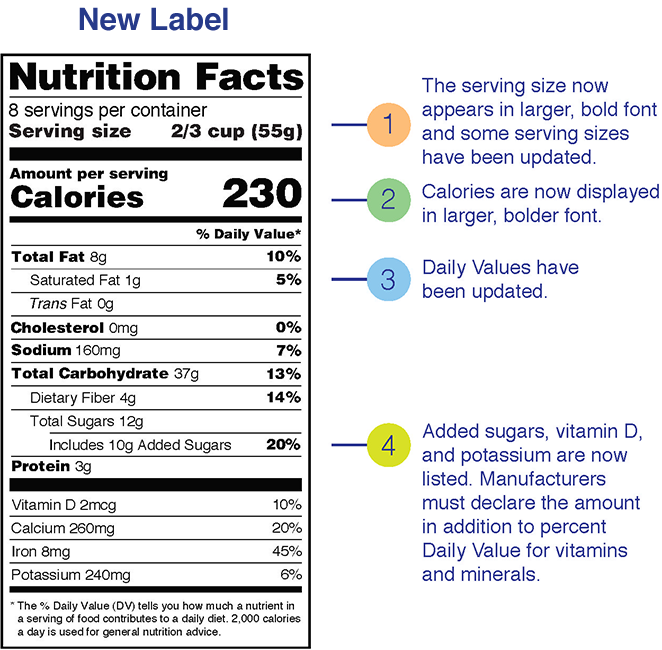


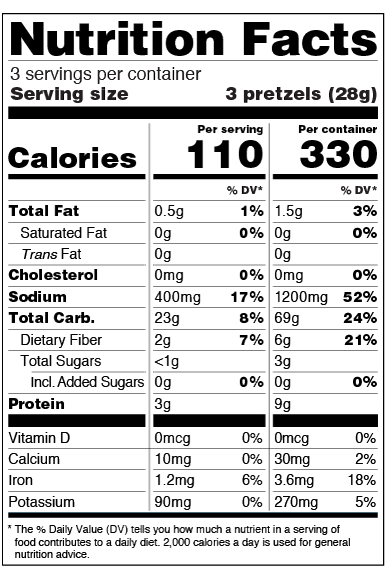






Post a Comment for "42 nutrients on food labels"